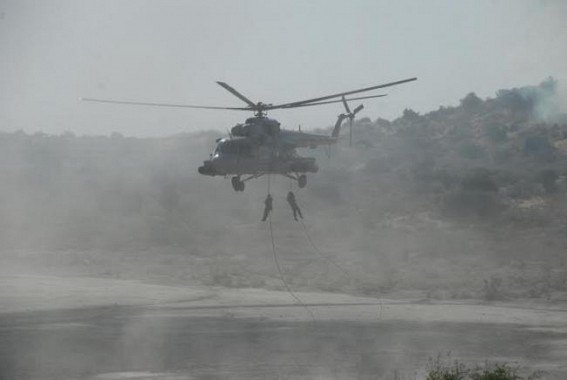
World military spending resumes upward course, says SIPRI
The data is being released to coincide with the start of the Stockholm Forum on Security and Development.
World military expenditure rose by 1 per cent in 2015. The first increase in military spending since 2011.
The increase reflects continuing growth in Asia and Oceania, Central and Eastern Europe, and some Middle Eastern states. The decline in spending in the West is also levelling off. At the same time, spending decreased in Africa, and Latin America and the Caribbean. Thus, the global military expenditure picture is mixed.
The United States remained by far the world’s biggest spender in 2015, despite its expenditure falling by 2.4 per cent to $596 billion. Among the other top spenders, China’s expenditure rose by 7.4 per cent to $215 billion, Saudi Arabia’s grew by 5.7 per cent to $87.2 billion—making it the world’s third-largest spender—and Russia’s increased by 7.5 per cent to $66.4 billion.
Falling oil prices signal cuts to military expenditure
A combination of high oil prices and new oil discoveries and exploitation has contributed to a surge in military spending in many countries around the world in the past decade. However, the crash in oil prices that started in 2014 has begun to reverse this trend in many oil revenue-dependent countries. Further cuts in spending are expected in 2016.
The most dramatic oil revenue-related reductions in spending in 2015 were in Venezuela (–64 per cent) and Angola (–42 per cent). Decreases were also recorded in, among others, Bahrain, Brunei, Chad, Ecuador, Kazakhstan, Oman and South Sudan.
Despite declining oil revenues, several other oil-exporting countries continued to increase military spending in 2015. Many of these countries—notably Algeria, Azerbaijan, Russia, Saudi Arabia and Viet Nam—were involved in conflict or faced with heightening regional tensions. However, Russia’s expenditure was lower than projected in its budget, and Saudi Arabia’s spending would have fallen but for the additional $5.3 billion cost of its military intervention in Yemen. Russia and Saudi Arabia are planning cuts in 2016.
Decline in Western military spending coming to an end?
Military spending in North America and Western and Central Europe has been decreasing since 2009, largely as a result of the global economic crisis, as well as the withdrawal of most US and allied troops from Afghanistan and Iraq. There were signs in 2015, however, that this decline was coming to an end.
US military spending was down by 2.4 per cent in 2015, a much slower rate of decline than in recent years. This was the result of measures passed by the US Congress to partially protect military spending from previously agreed budget deficit-reduction measures. US military spending is projected to remain roughly level in real terms in 2016.
Taken together, spending in Western and Central Europe was down by just 0.2 per cent in 2015. However, in Central Europe alone spending was up 13 per cent. There were particularly large increases in countries bordering Russia and Ukraine—namely Estonia, Latvia, Lithuania, Poland, Romania and Slovakia—which are those most concerned about Russia’s intentions following the crisis in Ukraine.
In contrast, Western European expenditure was down 1.3 per cent but this was the lowest rate of annual decline since the start of the recent fall in spending, which began in 2010. The United Kingdom, France and Germany have all announced plans for modest spending increases in the coming years sparked by concerns about Russia and the threat posed by the Islamic State.
‘Military spending in 2015 presents contrasting trends’, said Dr Sam Perlo-Freeman, head of SIPRI’s military expenditure project. ‘On the one hand, spending trends reflect the escalating conflict and tension in many parts of the world; on the other hand, they show a clear break from the oil-fuelled surge in military spending of the past decade. This volatile economic and political situation creates an uncertain picture for the years to come.’
Support Our Journalism
We cannot do without you.. your contribution supports unbiased journalism
IBNS is not driven by any ism- not wokeism, not racism, not skewed secularism, not hyper right-wing or left liberal ideals, nor by any hardline religious beliefs or hyper nationalism. We want to serve you good old objective news, as they are. We do not judge or preach. We let people decide for themselves. We only try to present factual and well-sourced news.







